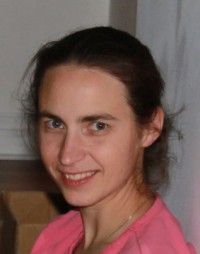Dr. Ali Mazalek, Associate Professor of Ryerson University and Georgia Tech will be visiting our lab on Thursday, December 4th. She will be presenting a talk between 11:00 am until 12:30 pm.
Welcome to DGP, Dr. Mazalek!
“Mind, material, and movement: embodying creativity in the digital era”
Abstract
We are increasingly tethered to a range of pixelated boxes of varying shapes and sizes. These devices are ever present in our lives, transporting us daily into vast information and computational realms. And while our interactions with digital devices are arguably becoming more fluid and “naturalâ€, they still make only limited use of our motor system and largely isolate us from our immediate physical surroundings. Yet a gradual shift in the cognitive sciences toward embodied paradigms of human cognition can inspire us to think about why and how computational media should engage our bodies and minds together. What is the role of physical movements and materials in the way we engage with and construct knowledge in the world? This talk will provide some perspectives on this question, highlighting research from the Synaesthetic Media Lab that supports creativity and expression across the physical and digital worlds.
 |
Biography Dr. Ali Mazalek has spent over 15 years trying to get digital technologies to fit better into her physical world and life, rather than letting them drag her into the pixelated depths of her computer screens. At the same time, she has a deep interest in how computational media can support and enhance creative practices and processes, supporting new forms of expression and new ways of thinking and learning. She is a Canada Research Chair in Digital Media and Innovation and Associate Professor in the RTA School of Media at Ryerson University, as well as Associate Professor of Digital Media at Georgia Tech. Her Synaesthetic Media Lab ( |

